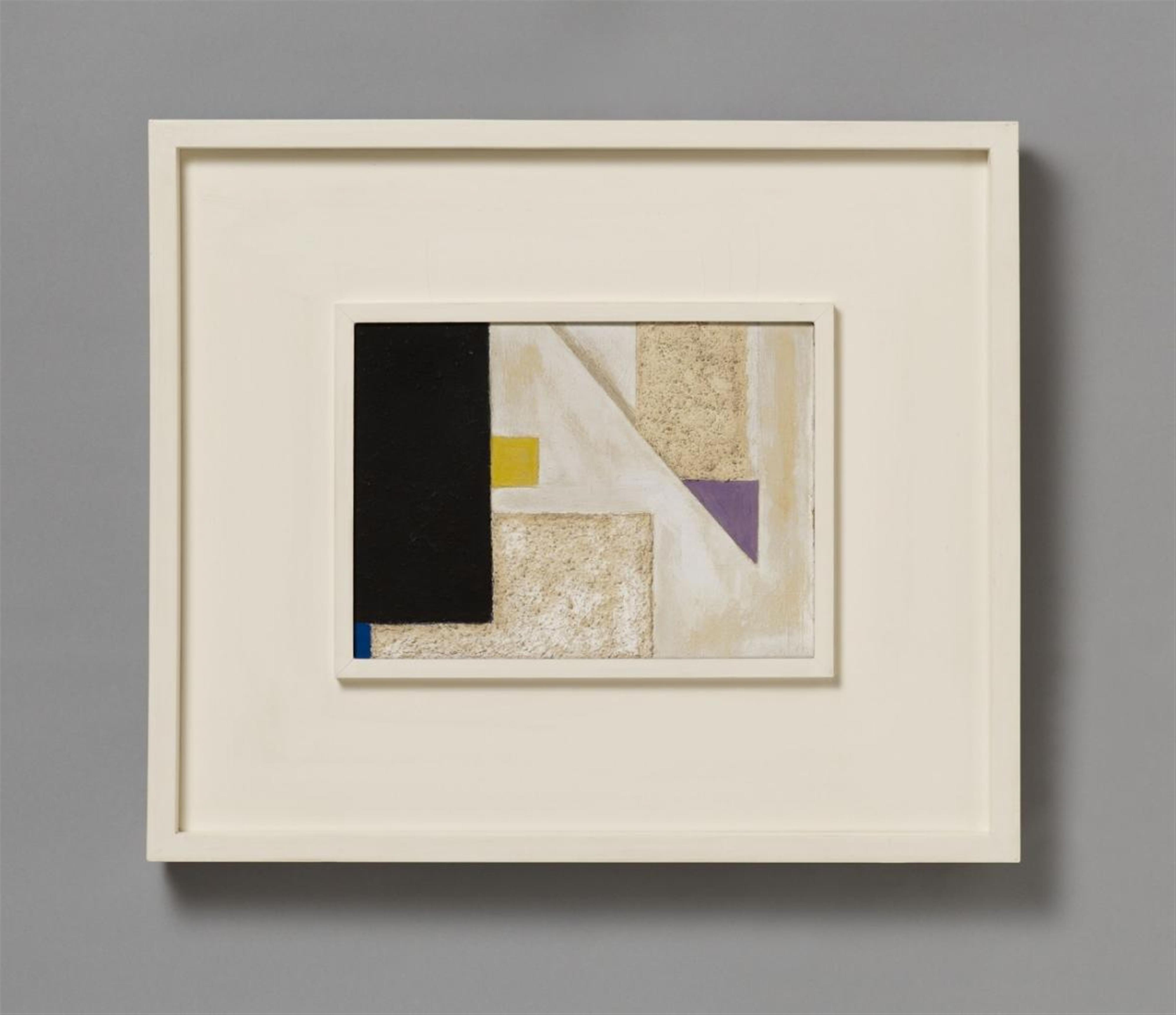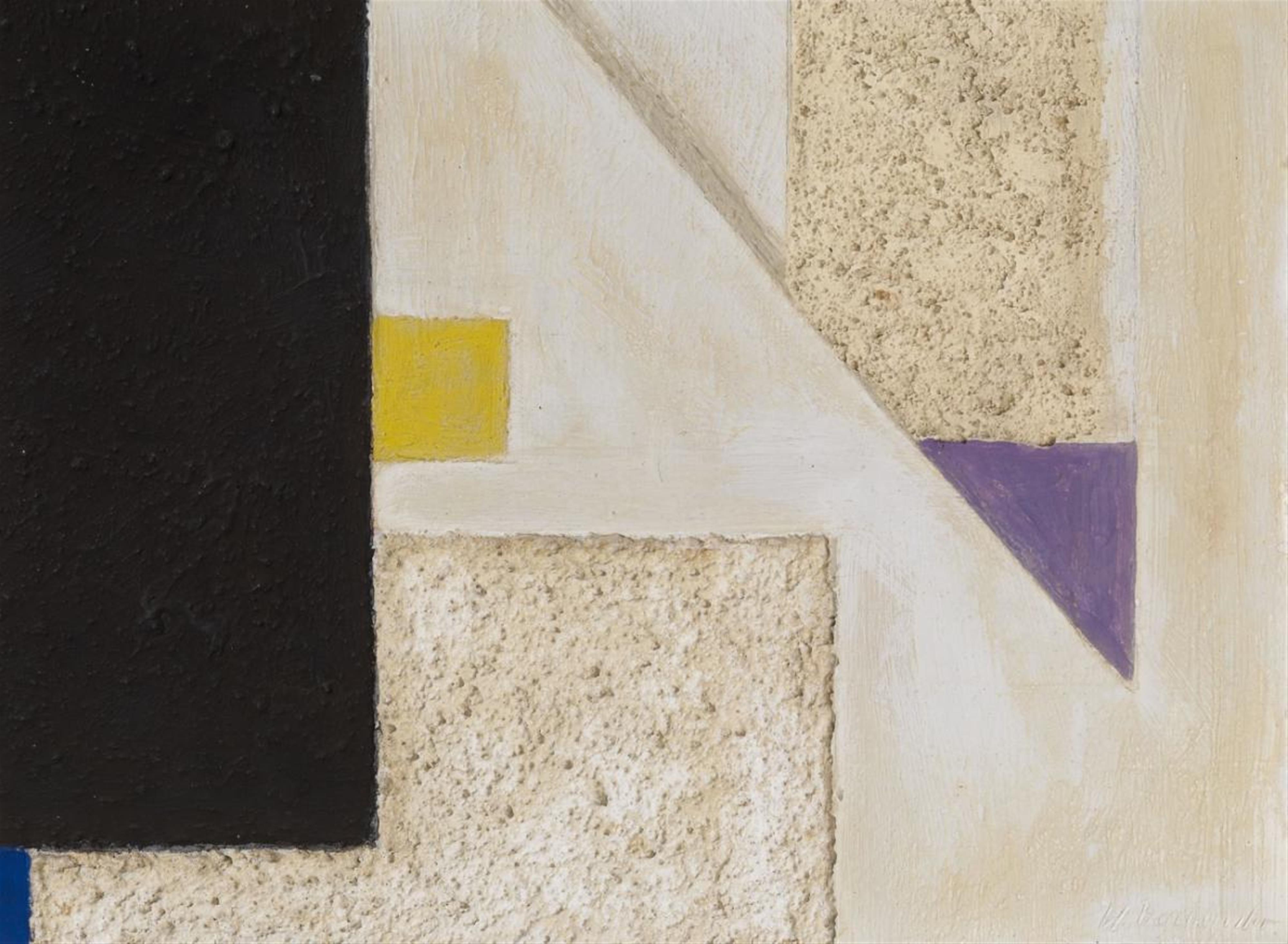Oil, plaster and sand on board 18 x 24.7 cm, framed. Scratched signature 'W. Baumeister' lower right. - In fine condition.
Beye/Baumeister 239
The new formal trends in the work of Willi Baumeister after the First World War are reflected, among other compositions, in a purely abstract group entitled "Flächenkräfte" (Planar Forces), executed in 1920/1921. Beyond the "Figur", the most important non-figural compositions in this context include, for instance, "Flächenkräfte" (Planar Forces, Beye/Baumeister 230), "Flächenbalance" (Planar Balance, Beye/Baumeister 233) and "Figur mit schwarzem Feld" (Figure with Black Field, Beye/Baumeister 242). Interestingly, even these early works by Baumeister always contain a black field - an upright rectangle which dominates as a central visual focus.
"These are paintings of extreme simplicity and rigour, with abstraction taken to extremes. However, similar to Mondrian's art, this abstraction is not void. The distribution of space, the colours and the rhythm express the painter's idea of how the world is held together in its innermost essence. [...] When Baumeister expresses himself, he refers not to Mondrian but to Cézanne (projected depth), Cubism (parts growing together to form a plane) and Post-Cubism (organisation of planes within a plane). This, at least, is how he summarises his ideas in an essay on the plane, written in 1923 and published in 'Baugilde' in 1925. In the same context he also mentions his 'Mauerbilder' (Wall Paintings), which he relates to the new functional architecture." (Will Grohmann in: op. cit., 1963, p. 40).
This is also the direct context in which we must see a sequence of six formal variations, documented under the heading "Kontruktivistisch" (Constructivist, Beye/Baumeister 234-239). All of them have been taken out of a larger composition of Planar Forces (see Beye/Baumeister 234 p. 105, with illus. below) and have been formally isolated by Baumeister as independent compositions signed by the artist. In this case, we have a planar fragment from the top right-hand part of the original composition. The triangle with its purple tip meets the vertical incision of the original central black plane. The geometric shape and a small number of colourful elements have been supplemented by relief-like planes with rough plaster added to them. On a smaller scale, we can see a literal re-balancing of the original formal proportions. Purely abstract works from this early phase in Willi Baumeister's oeuvre are extremely rare today.
Provenance
Dr. Alfred Gunzenhauser, Berlin; Graphisches Kabinett Kunsthandel Wolfgang Werner KG, Bremen; private possession
Literature
Will Grohmann, Willi Baumeister - Leben und Werk, Köln 1963, p. 40 and cat. rais. 127 with illus. ("Konstruktivistisch VI"); Peter Chametzky, Autonomy and Authority in German Twentieth-Century Art - The Art and the Career of Willi Baumeister (1889-1955), phil. thesis, New York 1991 (typescript), vol. 1, p. 192, vol. 2, p. 543, illus. 56
Exhibitions
Bremen 1973 (Graphisches Kabinett Kunsthandlung Wolfgang Werner KG), Willi Baumeister, cat. no. 6 with illus.




